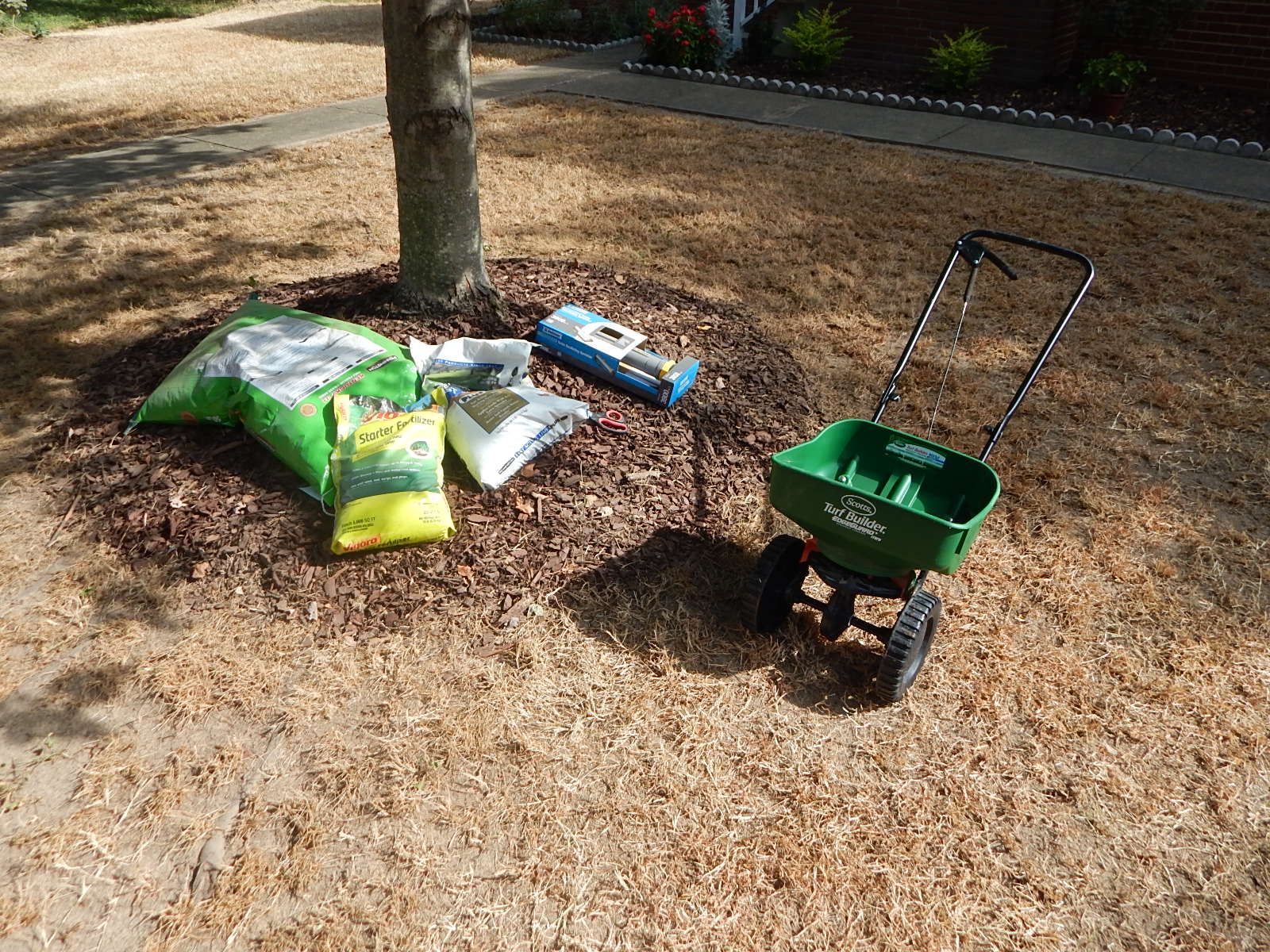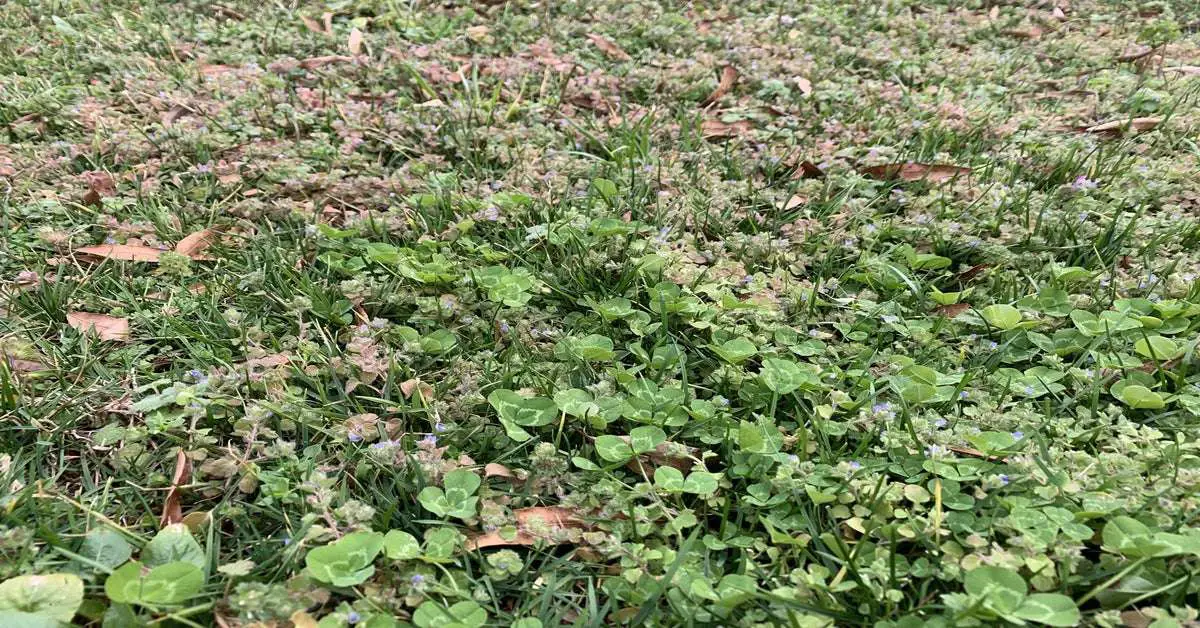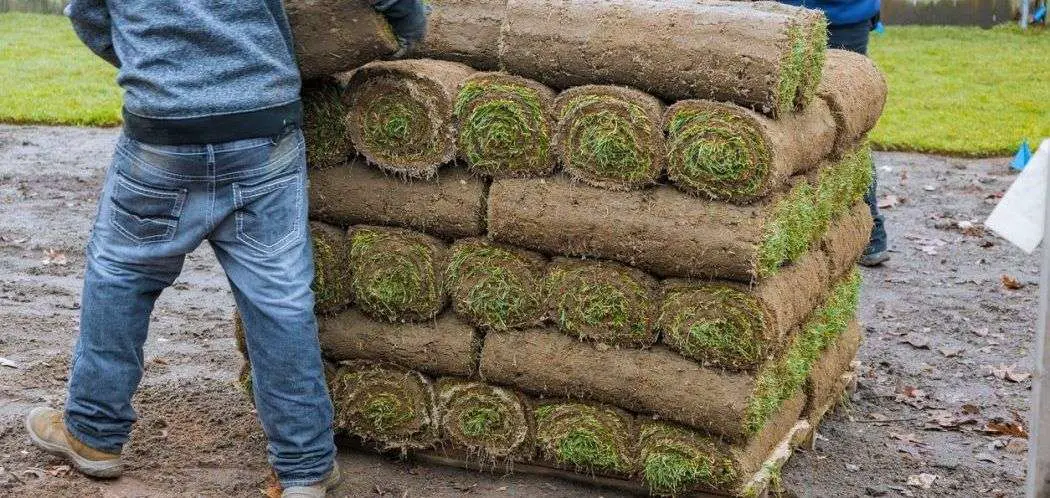Diy Or Hire Professionals
There are some benefits to hiring a professional lawn service A professional lawn care company can help you make sure that overseeding is something your lawn actually needs. Since patchy, scraggly lawns can be caused by other problems, you could be wasting your time and money on overseeding. A professional lawn care service can thoroughly evaluate your lawn and come up with a more complete plan to get your lawn green and healthy.
Professional lawn service also have more advanced equipment than most homeowners. Tools like de-thatchers, power rakes, and slit seeders get the job done quickly, accurately, and more effectively than you can with a rake and a seed spreader. Ensuring that the job is done right the first time is often well worth the investment.Regardless of your approach, overseeding is an easy and effective way to give your lawn a boost and help it look great for years to come.
It’s Uneven And Waterlogged And I Want To Resolve These Issues
Removing all the grass allows you to smooth any unevenness, correct drainage issues, reduce soil compaction problems & improve the health of your soil by adding fresh organic matter.
Most importantly, by starting over you have a good chance to introduce new and better grass that require less water and fertiliser and chemicals. Mother Nature will thank you.
How To Start A Lawn Over Rocky Soil
Related Articles
Rocky soil presents a few challenges when you’re trying to establish a lawn, but those challenges aren’t insurmountable. Several options enable you to prepare the soil to grow healthy grass in the rocky area. Also, selecting the right kind of grass gives your lawn the best chance of survival as the roots share the ground with rocks.
Read Also: Where To Sell Used Lawn Equipment
Remove Weeds And Thatch
Start the actual renovation by removing weeds especially the perennial ones manually or with a herbicide. This keeps other species from competing with your new grass. If you use herbicides, be sure to read the labels and follow the instructions. Most products will allow you to seed in seven days, but some weedkillers will keep your seeds from germinating for three to six weeks.
Check if you need to manage thatch by digging up a small plug of turf, several inches deep. If the spongy layer is more than three quarters of an inch thick when you compress it, its time to have your lawn dethatched. If your lawn is larger than 300 square meters, you would want to use a power rake or a scarifier. For smaller lawns, a manual thatching rake will do.
How To Reseed Or Overseed A Lawn In 6 Easy Steps

Your lawn may look healthier at certain times of year than others. Some grass goes dormant during the winter or summer, and some lawns may battle insects, fungus, or high usage, which thins them or creates barren areas. To deal with these situations, some homeowners may consider overseeding or reseeding their lawn. Learning how to overseed a lawn or reseed a lawn isnt difficult, but it does require some planning and research. Heres a simple step-by-step guide to help you.
Read Also: Does Ace Hardware Sharpen Lawn Mower Blades
Reasons Your Lawn Is Full Of Weeds
Starting out, you probably want to know just why weeds have overtaken your grass, so you can prevent it from happening again.
- Poor grass growth: Weeds thrive in thinning grass. The best way to keep weeds out is to have thick, tall, dense grass all over your lawn. If your grass is cut too short, its more susceptible to a full-on weed invasion. Setting your mower to the highest setting can help with this.
- Not enough water: Weeds tend to have robust root systems, and can easily compete with your grass for moisture. If you are not watering your grass enough, the weeds can absorb what water there is, taking it away from your grassroots.
- Compacted soil: If your soil becomes too compacted, whether from excessive foot traffic or poor soil composition, your grassroots wont have access to the nutrients, water, or air they need. This stressed turf makes for an exceptional weed breeding ground.
What Should I Do After Seeding
The first few months after lawn renovation are the most important. During the first two to three months, your seeds will begin to germinate, and you must pay attention to them to ensure growth.
After seeding, you need to water the seeds judiciously and at the correct intervals, mainly because the weather may not always be on your side. It would help if you also mowed .
Fertilization is essential for proper maintenance and to facilitate growth. This process must be done based on a soil test. Aerate the lawn to expose the seeds to sunlight, water and reduce competition from weeds.
Finally, protect your entire lawn from foot traffic for the first month. Seeds are easily injured and can be significantly affected when stepped on.
Also Check: How To Get Rid Of Quack Grass In Lawn
How To Overseed Your Lawn In Spring
Overseeding creates a thick, healthy lawn, which is the best defence against weeds. Keeping your lawn lush and thick provides natural protection from weeds and other annoyances, by allowing very little sunlight to permeate the grass, stopping growth underneath.
Step 1Step 1Cut and Rake
Before over-seeding your lawn, cut your grass at the lowest mower setting and bag the clippings. After mowing, rake the lawn to help loosen the top layer of soil and remove any dead grass and debris. This will give the grass seed easy access to the soil so the roots can easily take hold after beginning to sprout.
Step 2Step 2Enrich Soil
Add a quarter-inch layer of enriched soil over your lawn to protect and help settle the seed. Don’t put so much down that you kill your existing grass less than a quarter of an inch is plenty. Scotts® Turf Builder® LawnSoil works well for this purpose.
Step 3Step 3Add Grass Seed
Which type of grass seed you choose depends on your needs. Make sure to determine how much sun or shade your lawn gets before selecting your seed. Then just fill up your spreader, adjust the setting according to the label directions and apply.
Step 4Step 4Feed
To give your new grass seedlings the essential nutrients they need for fast growth, apply Scotts® Turf Builder®Starter® Food for New Grass after you’ve spread the grass seed.
Determine The Reason For Lawn Failure
If you work out why your lawn has deteriorated, you can use that knowledge to make the right decisions during your renovation. For example, if the lawn has thinned out due to growing trees that shade the lawn and compete for water and nutrients, you should select shade-tolerant grass varieties. You might also want to prune some of the tree limbs, opening up for more sunlight and rainfall.
You can get some information by just looking at the lawn, but I definitely recommend to do a proper soil test, says Karlsson.
Don’t Miss: What Is Preemergent
Can I Overseed With A Different Type Of Grass
Yes! Overseeding with another type of grass over your existing lawn is a good way to increase the diversity of your lawn, which will make it healthier, more resilient, and more unique. Just be sure that you are not using two very different types of seasonal grasses seeds on either side of the warm or cool spectrum will not share ideal growing conditions. However, a mild warm and mild cool seed combination can help keep your lawn thick throughout the year.
Your Preference Matters Too
You might find that you prefer a certain species of grass. Personally, I love the look of a Bermuda lawn, but thats just my personal opinion and you might like something different.
If do you have a Bermuda lawn, it is possible that it can crowd out other grass types. Its a pretty tough species!
While its possible that it will take over other grass types, its important to recognise that this is not an overnight process. It can take several seasons for this to occur.
In any event, youll want to do a little research on what grass type you like the look of and what is going to thrive in your area.
You May Like: How To Kill Violets In Lawn
Advantages And Disadvantages Of Seeding And Sodding
If your lawn is in rough shape, you may be wondering what the best course of action is to restore your lawn to a green and healthy state. There are a few factors to consider when deciding whether you should reseed or resod your lawn. Both options have their own set of advantages and disadvantages that should be considered.
Spreading And Nurturing The Seed

Also Check: Murry Lawn Mowers Parts
Loosen Turf With A Rake
For the best chances at your grass seed taking hold in your soil, it helps to loosen the turf with a rake before using the seed spreader. Compacted turf is less likely to absorb the seed and germinate because it struggles to reach the soil under the turf.
This can also help improve air circulation to the soil, helping the new grass to grow.
What Is Lawn Renovation
Just like the name implies, lawn renovation refers to the process of fixing or remodeling ugly and degenerated turf grasses in your lawn to improve its look and health. You can achieve this by improving lawn maintenance practices or total replacement and renovations.
Lawns can be damaged by overwatering, low fertility, drought, disease, pest or weed infestation, poor mowing, and more. The type of lawn renovation usually depends on the extent of the damage, personal choice, and several other factors.
If your lawn doesnt level up the bare minimum standard and expectations of a regular lawn, you may need to do some lawn renovations.
Read Also: How Much Trugreen Cost
Caring For Your New Lawn
You have now put a lot of work into creating a new lawn so do not forget the most important step. Plan for watering needs before you plant your lawn. Insufficient water and overwatering are the leading causes of new-lawn failure. Take precautions to prevent damage. Minimize play and foot traffic on new and sodded lawns for at least three weeks.
Do not fertilize new lawns for at least six weeks. After six weeks, apply a light fertilization of ½-pound nitrogen per 1,000 square feet. Thereafter, fertilize according to the recommendations given for established lawns. Read more for further lawn care for your chosen planting method.
How To Replant A Lawn
1. Clear the area. Kill weeds and any remaining poor-looking grass with a non-selective herbicide about 2 weeks before you want to seed your lawn. After everything is completely dead, rake the area to remove the debris.2. Prep for success. Now is a great time to core aerate the area if your soil is really compact. After aerating, rake the area level and loosen the top ¼ inch of soil. Then add a 1-inch layer of Scotts® LawnSoil evenly across the entire planting area. Its specifically formulated with a blend of rich, composted materials to provide an excellent growing environment for young seedlings.
3. Select your grass seed. Choose a Scotts® Turf Builder® Grass Seed that is right for your location. Do you live in the north and need a grass type that stays green in cooler temperatures, or do you live in the south and need a grass type that stays green during the hot summer months? Be sure to also take into consideration the growing conditions in your area: How much sun? How much wear and tear from children and family pets? If you need help finding a grass type that matches your growing conditions, check out our Identify Your Grass article.
Don’t Miss: Does Scotts Fertilizer Expire
When To Renovate Your Lawn
You can renovate your lawn when the quality has become unacceptable, but you may also consider it when introducing different types of grass into a lawn.
Consider renovation when:
- Introducing lower maintenance turf varieties into an existing lawn .
- About 30 to 50 percent of the lawn is dead or has very sparse growth. This may be due to low soil fertility, drought and heat, insect damage, poor mowing practices, disease, moderate soil compaction, or increasing shade and competition from growing trees.
- The lawn is soft and spongy when walking across it and responds poorly to regular watering and fertilizer applications. This usually indicates excessive thatch .
- Broadleaved weeds or grassy weeds cover about 30 to 50 percent of the lawn area and there is not enough existing turf cover to fill in the bare areas once the weeds are removed.
How To Restore A Lawn Full Of Weeds
Read our handy guide on how to restore a weedy, patchy lawn to its former glory.
If your lawn is patchy and full of weeds, it will never be the envy of the neighborhood. What youre after is a lush, green lawn with even grass and no dandelions poking their way through. That may sound hard to achieve, but it isnt too difficult if you follow these steps.
If you only have a few pesky weeds punctuating your lawn, you may be able to dig them up by handpaying careful attention to make sure you get them roots and all. But if your lawn is overrun with weeds, you may need to start from scratch. Heres our how-to guide on restoring a lawn full of weeds.
Once your lawn is nice and green, we recommend hiring a professional lawn care company to help you maintain it to keep it weed-free. Our top recommendation goes to industry leader TruGreen.
Recommended Reading: Murray Mowers Parts
What You Will Need
While overseeding isnt an overly complex task, it can be time consuming to do manually without the right tools. This is especially true if you have a large yard that will require a lot of seed and fertilizer spreading, or if you plan to do the entire lawn instead of just spot-treating with overseeding.
To successfully overseed your lawn, you should have:
What Is The Best Time To Renovate Your Lawn

For the best and fastest results, the perfect time to renovate your lawn is mid-August to mid-September. You can go as last as early October. But try to avoid renovating your property in or after mid-October.
During the suitable lawn renovation period, which happens to be late summer, plants grow at their best. Soil temperatures are warm and adequate for growth, allowing seeds to germinate and get established quickly.
Renovating your lawn during this period will enable you to grow the toughest turfs that can withstand the weed growth that follows in mid-October.
Recommended Reading: Iowa Lawn Care Schedule
How To Renovate Your Lawn By Overseeding
When the weedkiller doesnt bite and the brown patches take over, its easy to start doubting if your garden will ever look the same. But theres hope. You can always start over with a lawn renovation.
| Before you start |
|---|
| Seeding or turfing? Decide which type of renovation you should go for new seeds or new turf by checking how large the damaged part of the lawn is. If less than 40 per cent of it is dead, seeding is sufficient.Why renovate? Try to work out what has caused the lawn to fail. This matters when choosing new seeds and might affect other decisions during renovation.Estimate the effort. Before getting started, try to calculate how large a job youre facing. Do you need to rent an aerator? Would you like to use a spreader? Should you hire a professional for parts of the work? |
Theres a difference between renovating a lawn by adding new seeds and by starting from square one with new turf. If more than 40 per cent of the grass in your lawn is damaged, you should go with the latter, but if youre looking at less than 40 per cent of the lawn being damaged or covered with weeds, a good overseeding that is adding more seeds to your existing grass plants will be sufficient. In this article, we will focus on renovating your lawn by overseeding.
How to do a soil test varies in different parts of the world, but commercial labs generally do it. The lab will provide you with a detailed mode of procedure that will be helpful when you move on with your renovation.
